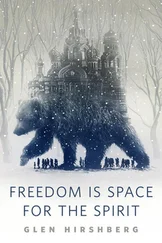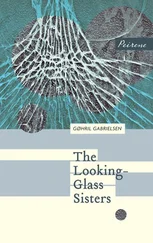Century after century, the whites kept getting it wrong. At the end of the nineteenth century, the military campaigns to annihilate the Indians in southern Argentina were called “the conquest of the desert,” even though Patagonia was less deserted then than it is today. A few years ago the Argentine civil registry refused to accept indigenous names “because they are foreign.” Anthropologist Catalina Buliubasich discovered that the registry was giving undocumented Indians from highlands near Salta birth certificates on which their aboriginal names were exchanged for unforeign ones like Chevroleta, Ford, Twenty-Seven, Eight, and Thirteen. Some were even rebaptized Domingo Faustino Sarmiento, the whole shebang, in homage to the founding father who felt nothing but disgust for the native population.
For the Course on Penal Law
In 1986, a Mexican congressman visited the jail in Cerro Hueco, in Chiapas. There he found a Tzotzil Indian who had slit his father’s throat and been sentenced to thirty years. But every day at noon, as the congressman discovered, the dead father brought tortillas and beans to his son in jail.
The Tzotzil prisoner had been interrogated and judged in Spanish, of which he understood little or nothing, and with the help of a good beating he confessed to something called parricide.
Today, Indians are considered deadwood in the economies that live off their hard labor, and a millstone for the plastic culture to which these countries aspire. In Guatemala, one of the few countries where Indians managed to recover from their demographic catastrophe, they suffer mistreatment as an excluded minority even though they are the majority. Mestizos and whites (or those who call themselves white) dress and live (or wish they could dress and live) Miami-style so that they won’t look like Indians, while thousands of foreigners make the pilgrimage to the market at Chichicastenango, a pillar of world beauty, to buy the marvels woven by indigenous artists. Colonel Carlos Castillo Armas, who took power in 1954, dreamed of turning Guatemala into Disneyland. To save the Indians from ignorance and backwardness, the colonel proposed “awakening their aesthetic sense,” as an official pamphlet explained, “by teaching them weaving, embroidery, and other trades.” Death surprised him in the midst of this task.
“You look like an Indian” or “You smell like a black,” say some mothers in countries with a large Indian or black presence when their children don’t want to take a bath. Yet the chroniclers of the Conquest noted the Spaniards’ astonishment at the frequency with which Indians bathed. It was Indians, and later African slaves, who had the courtesy to pass their hygienic habits on to other Americans from Canada to Chile.
The Christian faith distrusted bathing, suspecting it of being a sin because it felt so good. In Spain during the Inquisition, frequent bathers, accused of Moslem heresy, could end up burned at the stake. In Spain today, someone is a real Arab if he vacations at Marbella on the Costa del Sol, but a poor Arab is just a Moor, perhaps “a stinking Moor.” Anyone who has visited the Alhambra, that festival of water in Granada, knows Islam has been a culture of water since way back when Christians wouldn’t touch it except to drink. In reality, showers became popular in Europe quite recently, more or less at the same time as television.
They say Indians are supposed to be cowards and blacks easily frightened, but they’ve always been good cannon fodder in wars of conquest, wars of independence, civil wars, and border wars in Latin America. The Spanish used Indian soldiers to massacre Indians during the Conquest. The nineteenth-century wars of independence were a hecatomb for Argentine blacks, who were always sent to the front lines. In the war against Paraguay, the bodies of black Brazilians littered the battlefields. Indians were the troops Peru and Bolivia used in the war against Chile. “That abject and degraded race,” as Peruvian writer Ricardo Palma called them, were sent to the slaughterhouse as the officers fled shouting “Long live the fatherland!” More recently, it was Indians who died in the war between Ecuador and Peru and Indian soldiers who destroyed Indian villages in the Guatemalan highlands. For their mestizo officers each crime was a grisly rite meant to exorcise half their blood.
The Goddess
On the night celebrating Iemanyá, the entire coast is a feast. Bahía, Rio de Janeiro, Montevideo, and other shores celebrate the goddess of the sea. Crowds turn the beach into a sea of candles and the waters into a garden of flowers and perfumes, necklaces, cakes, candies, and other trifles and treats she may fancy.
Then the worshipers make a wish:
The map of buried treasure,
The key to forbidden love,
The return of the lost,
The resurrection of the dead.
The worshipers ask and their wishes come true. Perhaps the miracle lasts no longer than it takes to utter the words that name it, but in that fleeting moment when the impossible happens, the worshipers shine with their own light, luminous in the dark.
Once the waves have carried away their offerings, the worshipers retreat, their eyes on the horizon, so as not to turn their backs on the goddess. And very slowly they return to the city.

The same people who claim blacks are lazy also say admiringly, “He works like a black.” They say, “Whites run, blacks flee.” The white who runs was robbed; the black who flees is a thief. Even Martín Fierro, the character from the Argentine literary classic, who best embodies all poor and persecuted gauchos, thinks blacks are thieves created by the Devil to the disgrace of hell. Indians, too: “The Indian is Indian and will not try/To change his ways so forlorn/An Indian thief he was first born/And like an Indian thief he will die.” Black thief, Indian thief: the I-don’t-understand-you tradition insists that thieves be the ones who are robbed the most.
Since the days of conquest and slavery, Indians and blacks have been robbed of their hands and their lands, their labor and their wealth — their words and memory as well. In the Rio de la Plata, “ quilombo ” now means brothel, chaos, disorder, confusion, but this Bantu word really meant training camp. In Brazil, quilombos were the sanctuaries founded in the jungle by fugitive slaves, some of which lasted a long time. The free kingdom of Palmares in the hinterlands of Alagoas lasted an entire century, resisting more than thirty military expeditions by the armies of Holland and Portugal. The true history of the conquest and colonization of America is a story of unceasing dignity. There was not a day without rebellion. Yet official history has erased every one of those uprisings with the disdain reserved for ill-mannered servants. After all, when blacks and Indians refused to accept slavery or forced labor as their fate, they were trying to subvert the organizing principles of the universe. Between the amoeba and God, universal order was founded on a long chain of successive subordinations: like the planets that orbit the sun, serfs revolved around their lords. Social inequality and racial discrimination are still an integral part of the harmony of the cosmos, and not only in the Americas. As Italian politician Pietro Ingrao noted in 1995: “I have a Philippine maid at home. It’s so strange. It’s hard for me to imagine a Philippine family that would have a white maid in their home.”
Hell
In colonial times, Palenque was a sanctuary of freedom deep in the jungle, a refuge for fugitive black slaves from Cartagena de Indias and the plantations of the Colombian coast.
Читать дальше












